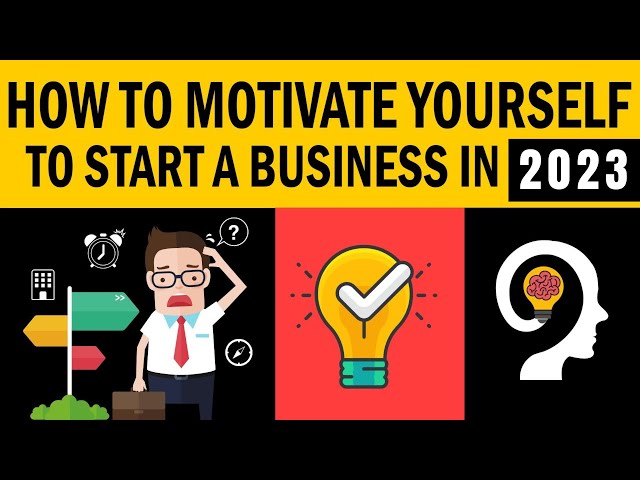Introduction:
Business success is an intricate and dynamic symphony orchestrated by a multitude of factors working in harmony. Navigating the complexities of the business world requires a nuanced understanding of the elements that contribute to success. This comprehensive guide embarks on a detailed exploration of the myriad factors that converge to propel businesses toward triumph, offering insights for entrepreneurs, business leaders, and aspiring individuals eager to unravel the secrets of sustained success.
- Clear Vision and Mission: A successful business begins with a clear and compelling vision. A well-defined mission statement provides purpose and direction, serving as the guiding force behind strategic decisions, goal-setting, and day-to-day operations.
- Strategic Business Planning: Strategic planning is the compass that steers a business toward its goals. Successful businesses meticulously plan their trajectory, considering market trends, competition, and internal capabilities. This planning provides a roadmap for sustainable growth and adaptability to changing circumstances.
- Market Research and Understanding: Informed decisions stem from a deep understanding of the market. Successful businesses invest time and resources in comprehensive market research, identifying target audiences, analyzing consumer behavior, and staying attuned to industry trends.
- Innovative Product or Service Offerings: A cornerstone of success is the ability to offer products or services that meet or exceed customer expectations. Successful businesses prioritize innovation, creating offerings that stand out in the market and address evolving consumer needs.
- Effective Marketing and Branding: Strategic marketing and branding are essential components of business success. Successful enterprises develop strong brand identities, employ effective marketing strategies, and create compelling narratives that resonate with their target audience.
- Financial Acumen and Management: Sound financial management is a pillar of business success. Successful businesses maintain meticulous financial records, monitor cash flow, and make informed financial decisions. Financial acumen allows for investment in growth opportunities and safeguards against economic downturns.
- Adaptability and Flexibility: The business landscape is dynamic, requiring adaptability. Successful businesses embrace change, pivot when necessary, and remain agile in response to market shifts, technological advancements, and unforeseen challenges.
- Customer-Centric Approach: A relentless focus on customer satisfaction is a hallmark of successful businesses. By understanding and addressing customer needs, providing exceptional service, and fostering meaningful relationships, businesses cultivate loyalty and advocacy.
- Talented and Engaged Workforce: People are a business’s most valuable asset. Successful businesses prioritize recruiting and retaining top talent, fostering a positive work culture, and encouraging employee engagement. A motivated and skilled workforce contributes to innovation and operational excellence.
- Effective Leadership: Leadership is a linchpin in the success of any organization. Successful leaders inspire, communicate a compelling vision, and guide their teams with transparency and integrity. Leadership fosters a positive organizational culture and sets the tone for achievement.
- Quality Networking and Partnerships: Building strong networks and strategic partnerships is a key factor in business success. Successful businesses leverage relationships with suppliers, clients, industry peers, and community stakeholders to create synergies and unlock opportunities.
- Investment in Technology: Embracing technological advancements is vital for staying competitive. Successful businesses invest in cutting-edge technologies, automation, and digital solutions to enhance efficiency, improve processes, and meet the demands of the digital age.
- Operational Efficiency and Streamlining: Streamlining operations and optimizing efficiency contribute to overall success. Successful businesses continuously evaluate and refine processes, eliminate redundancies, and implement lean practices to enhance productivity and reduce costs.
- Corporate Social Responsibility (CSR): Social responsibility is an integral part of success. Successful businesses engage in CSR initiatives, demonstrating a commitment to environmental sustainability, ethical practices, and community well-being, which resonates positively with consumers.
- Continuous Learning and Adaptation: The pursuit of knowledge and a commitment to continuous learning are vital for success. Successful businesses foster a culture of learning, encouraging employees to acquire new skills, stay informed about industry trends, and adapt to evolving market dynamics.
- Brand Reputation Management: Building and protecting a positive brand reputation is essential for success. Successful businesses actively manage their online and offline presence, respond proactively to feedback, and uphold their brand values to establish trust with stakeholders.
- Effective Communication Strategies: Communication is the glue that binds internal and external stakeholders. Successful businesses employ effective communication strategies, ensuring clarity, transparency, and consistency in conveying their messages to employees, customers, and the broader public.
- Risk Management: Success requires a calculated approach to risk. Successful businesses identify potential risks, implement risk management strategies, and prepare contingency plans to navigate challenges, whether they arise from economic fluctuations or unforeseen events.
- Strategic Alliances and Mergers: Strategic alliances and mergers can amplify success. Successful businesses explore collaborations that complement their strengths, expand market reach, and create opportunities for shared resources and expertise.
- Measurable Key Performance Indicators (KPIs): Establishing and tracking Key Performance Indicators (KPIs) is essential for gauging success. Successful businesses define measurable objectives, regularly assess performance against KPIs, and use data-driven insights to refine strategies.
Conclusion:
The symphony of business success resonates with a harmonious blend of vision, strategy, innovation, and adaptability. By weaving together the multifaceted factors explored in this guide, businesses can aspire not only to achieve but to sustain success. This journey requires dedication, resilience, and a commitment to continuous improvement, as successful businesses are those that evolve, learn, and adapt in the ever-changing landscape of commerce. Aspiring entrepreneurs and business leaders can draw inspiration from these factors, understanding that success is not a destination but a dynamic and ongoing pursuit.









